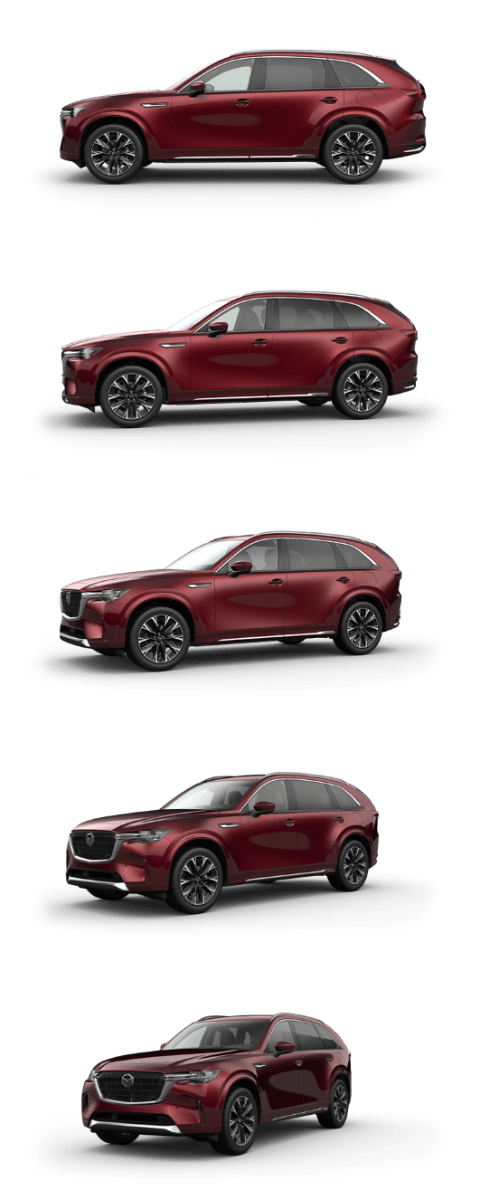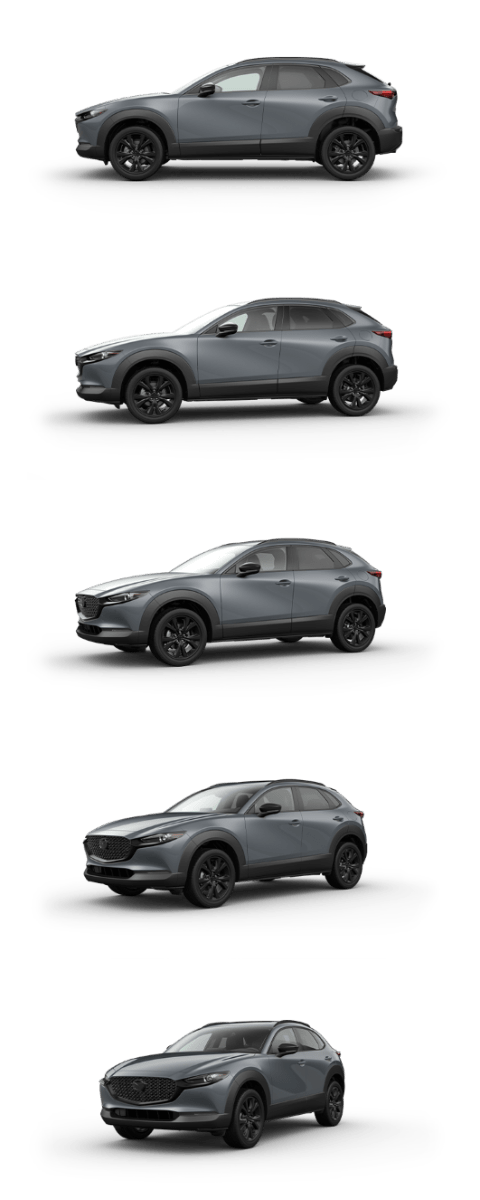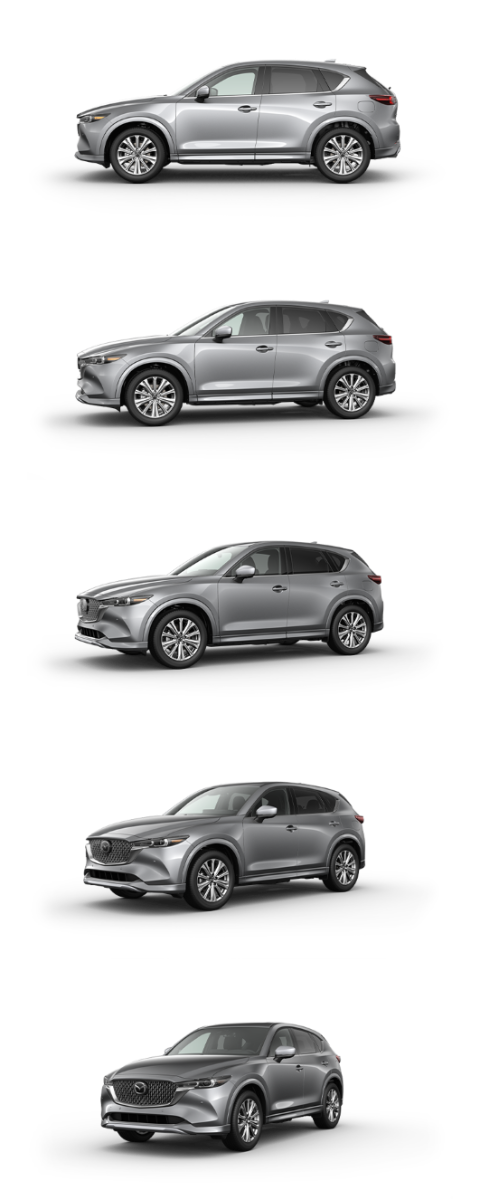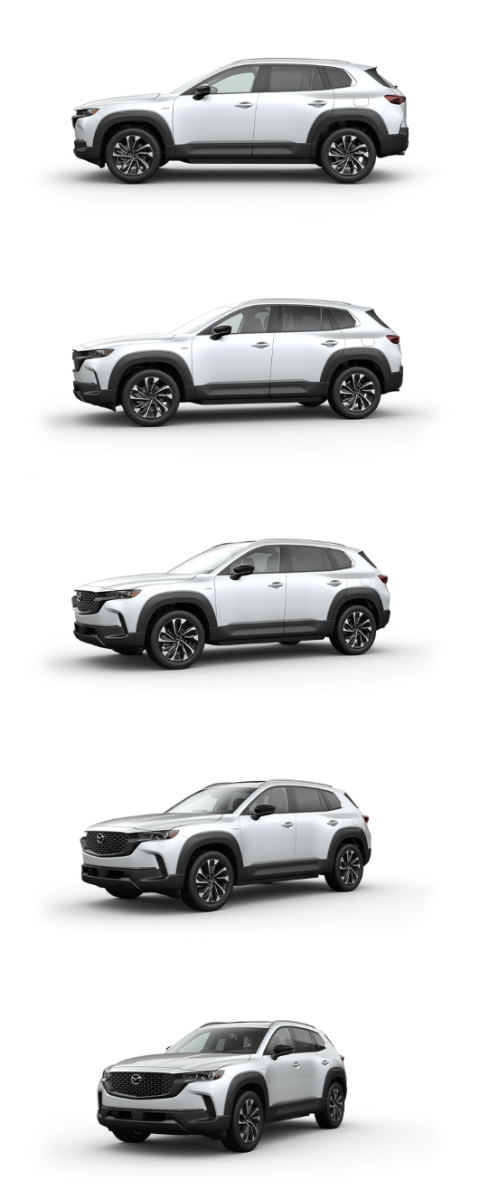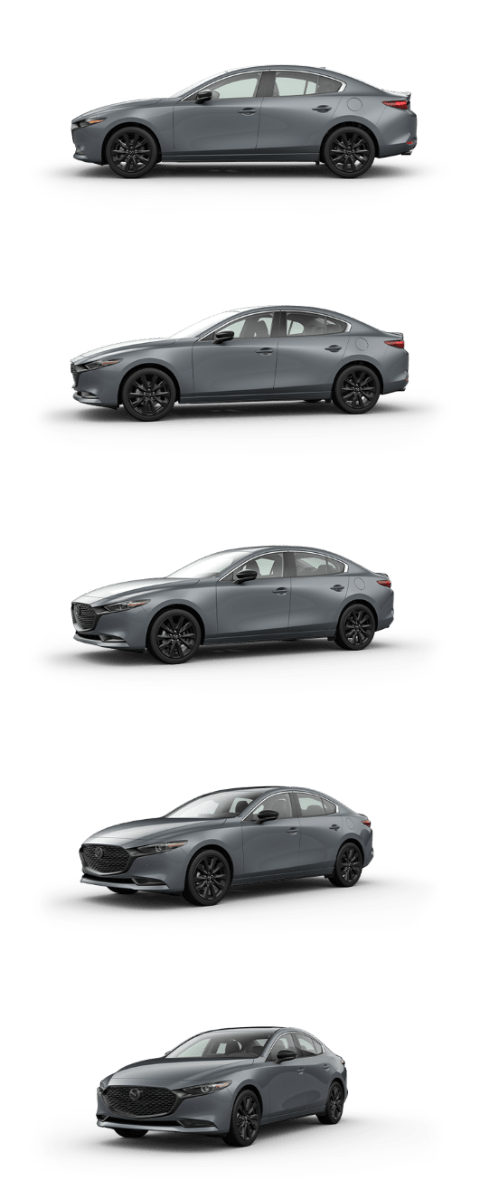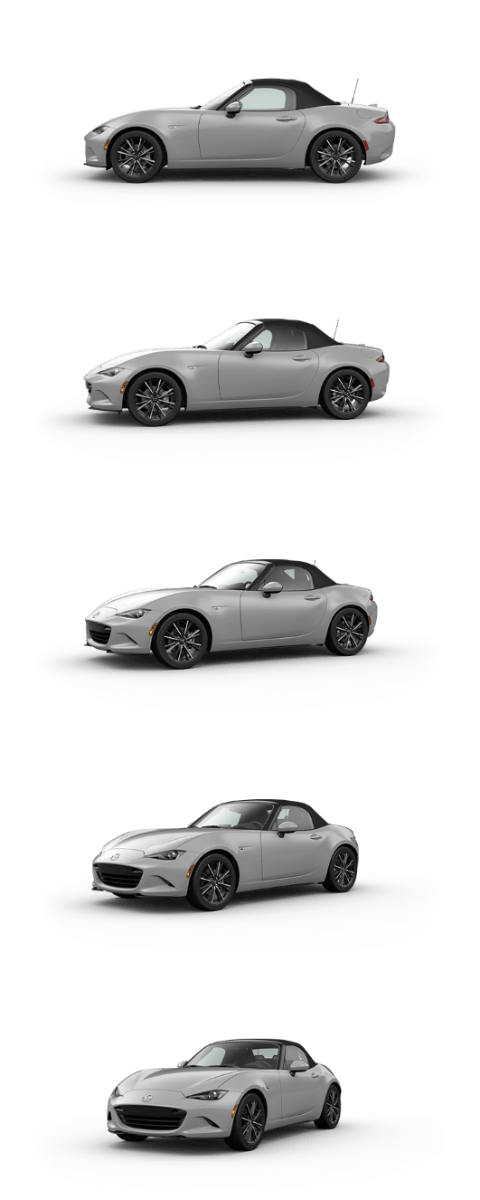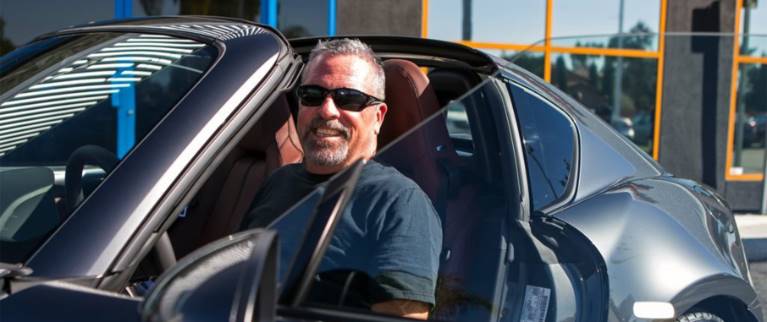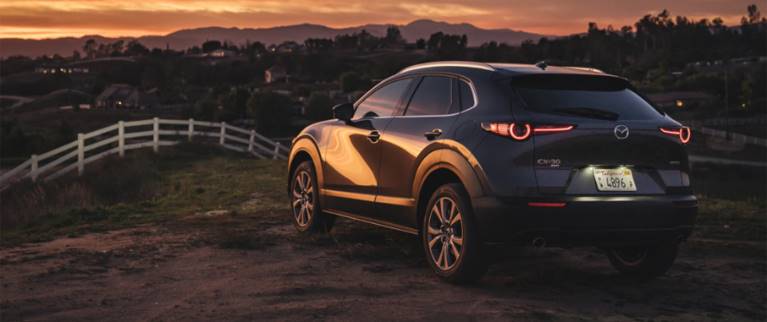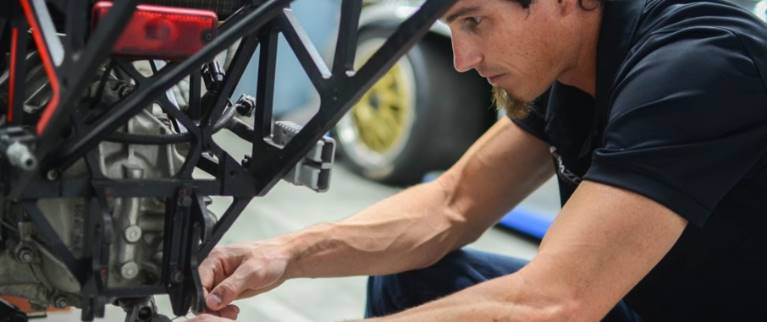What Makes a Car Fun to Drive?
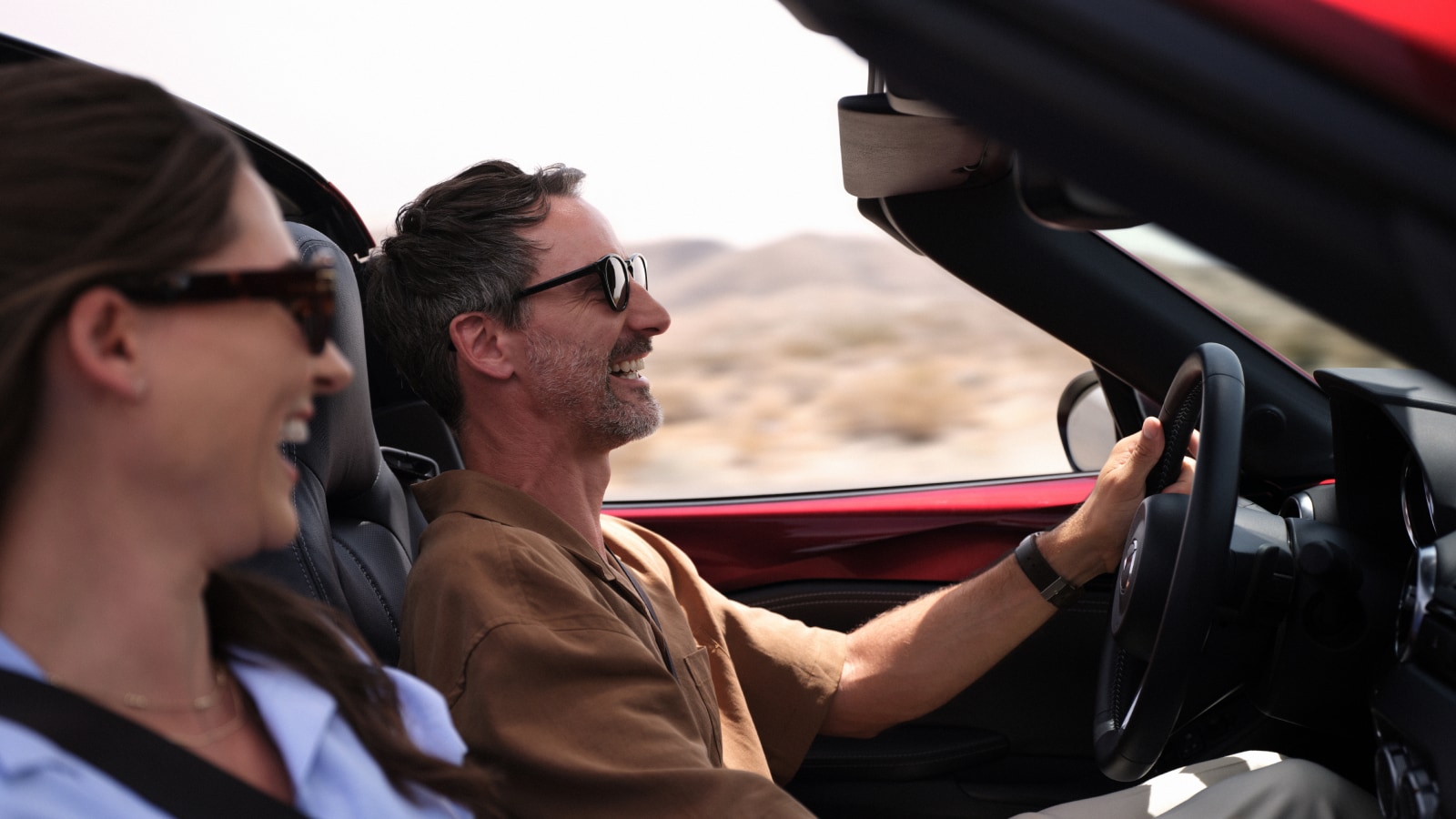
Ask your average driver what makes cars fun to drive, and you might hear replies varying from power to speed to general “awesomeness.” Other languages have come up with words to describe this feeling. In Germany, the land of the Autobahn, they use the term Fahrvergnügen, or “driving pleasure.” And of course, there is Jinba-ittai, a four-character Japanese compound that refers to the unity between horse and rider, now practically a byword for Mazda driving dynamics.
There is certainly no mandate to adhere to when defining fun. All some drivers need to enjoy time on the road is a bud vase, fragrance dispenser, or high-fidelity sound system, and that’s fine. However, many drivers do want to enjoy driving, not just the drive — what makes that possible? What actually creates that connection? What makes a car feel alive?
To answer that, we’ll break down the key traits that define a fun-to-drive car — from agility and feedback to G-forces and tires — with insights from two Mazda insiders who know driving joy inside and out: Jon Leverett, Mazda Launch Strategy Manager, and Jake Stumph, Mazda Product Specialist. Their expert commentary brings first-hand perspective to what sets Mazda vehicles apart — and why some cars just make you want to drive.
1. Agility
Regardless of how adept any suspension engineering, steering, or tire department is, much of the weight described above will determine a car’s agility — its ability to alter direction or speed. You can see this in nature when a small rodent quickly outmaneuvers a much larger opponent, or… on a football field. Think of the heavy car above with the powerful engine as a defensive lineman: big, strong, and with lots of mass. Though the lineman’s performance is no less noteworthy, the players charged with weaving around and avoiding those out to tackle them are typically lighter and smaller.
That said, it is worth noting that the most agile cars have their weight more evenly distributed and closer to the ground. Having each of the four tires carrying similar workloads makes it harder to overwhelm their traction with heavy doses of acceleration or braking, as does splitting steering effort to the front and sending engine power to the rear wheels.
The last key in terms of agility is keeping the weight as low and close to the center of gravity as possible. To demonstrate, imagine two people of similar height and weight, one sitting on a tall barstool, the other on a short chair. Which would require less force to topple over? The friend on the bar stool. Keeping most of a vehicle’s weight close to the center of gravity provides a better polar moment of inertia, which positively affects how much force is required for your vehicle to change directions.
-
RWD cars have an intrinsic neutrality to them, where the vehicle responds with you at the center, since the power is going to the rear wheels and the steering is, of course, handled by the front wheels.
You’re able to press the accelerator sooner in an RWD car when exiting a turn to put power down. Being able to bring the rear of a vehicle around by overpowering the rear wheels is one of the most satisfying experiences — especially when the car is well-balanced — so you can control the drift.
I enjoy the RWD proportions of all Mazda vehicles (whether they are actually RWD or not) which place the driver further behind the front wheels to hint at that ideal sports car position, where the car rotates around the driver.
– Jon Leverett, Mazda Launch Strategy Manager
2. Steering
Another key trait of fun-to-drive cars lies in their steering, which should feel both direct and quick in response to driver inputs. When you turn your vehicle’s steering wheel even a little bit, you want the car to do something in response. A “faster” (numerically higher) steering ratio means the front wheels turn side-to-side quicker for the same steering wheel rotation than they would with a “slower” ratio.
Between the front wheels and the steering wheel there are pivot points, gears, and sometimes electric motors, and the tighter these connections are, the better you can feel front tire directional changes. Softer calibrations may help with refinement, but tight steering and refinement are not mutually exclusive.
Meanwhile, while it might initially seem counterintuitive, steering that takes no effort as you turn the wheel off-center isn’t great, either. When a driver is given no feedback from their wheels, they’re left in the dark regarding how hard the front tires are working. You want to feel that effort, otherwise you would have to rely on your ears to detect, say, when your vehicle’s tires are squealing at their traction limit.
-
“I have many memories driving on and around the Blue Ridge Parkway in different sports cars — usually Mazda vehicles. Driving on a winding mountain road in a car that looks the part and adds to the beauty of the environment around you is always really special, especially during the changing of the seasons. I always enjoy driving with someone not used to the dynamics and responsiveness of something like an MX-5 who starts out the drive nervous and clinging to a handle in the car and then relaxes once they realize how planted and built for that type of environment it is.”
– Jon Leverett, Mazda Launch Strategy Manager
3. Light Weight
A good portion of the joy of driving comes down to how your car transitions — slowing down, accelerating, heading in a different direction, or combining one or more of these actions, including back-to-back directional changes. To put it another way, no one ever enjoyed a roller coaster that just drove straight through a flat park at a constant speed across a prairie. Well, they might have, but they would have been on a train.
The weight of a vehicle affects every transition it goes through, and most vehicles tend to proceed in the straightest possible direction until you input an action to alter that. You’ll recall from physics class that F=ma (force equals mass times acceleration), so generally, as mass increases, so does the force required to change direction, go, or stop quickly. This is one of the reasons why auto racing series normally have a minimum vehicle weight, and there is no maximum specified.
And weight begets weight. A big, powerful engine needs a stouter structure to contain it, a stronger transmission and axles to deliver the power to the wheels, the tires need to be bigger (or the power just spins them), then the brakes need to be bigger… and so on.
Short answer? Lighter cars can respond more swiftly and fluidly to changes in speed and direction. This enhanced responsiveness makes transitions — like turning, accelerating and braking —more engaging.
4. Feedback
Your body in the seat, your feet on the pedals, and your hands on the steering wheel — all these touchpoints give you physical feedback about your car’s performance. The better the “information” coming through those touchpoints, the greater the fun-to-drive factor.
All your other senses also provide feedback that can help fulfill a fun-to-drive quotient, too. The sounds your car makes are the sub-soundtrack to all of your drives, and an engine that sings Mozart (like the inline-six as used in the 3.3-liter Mazda CX-70 and CX-90) will be more fun to drive than one that sounds like a coffee grinder or blender.
Lastly, for many people, there’s another feedback-related trait that can make a vehicle more fun to drive, although it’s growing less common every year: a manual transmission. In a vehicle with a manual gearbox, not only does the driver get to decide which gear to use and when (with no computer to override their choice), they also get to enjoy two more physical points of connection with the shifter and the clutch pedal.
Both the Mazda MX-5 Miata and the Mazda3 Hatchback vehicles offer a trim with a manual gearbox, just make sure the parking valet knows how to drive one before handing over the key.
-
“I’ve been lucky enough to drive all manner of cars. All of them, even a dilapidated LA taxi, had redeeming qualities, but most weren’t fun or even designed with fun in mind. So, when I drive a truly fun car, it stands out. Every fun car I have ever driven has emphasized tactility and engagement at the forefront. When the steering; shifter; engine response, and hundreds of other little intangibles all work just right, they help generate a rhythm between car and driver that can’t be described in any other way than fun.”
– Jake Stumph, Mazda Product Specialist
5. Easy-to-find limits
What does it mean when you read about cars having approachable limits or being user-friendly? These descriptions stem from a combination of two things. The first is the vehicle providing good feedback to the driver.
The second thing is the vehicle having been manufactured to drive with predictable chassis tuning, wherein the car does not feel twitchy as it reaches the tires’ maximum grip levels.
Part of being a professional driver or racer is having the skill to successfully find these limits in sports and racing cars, which have low polar moments that make it relatively easy to spin out in these vehicles. A “forgiving” car, on the other hand, can manage a lot of bad driver inputs, such as yanking on the steering wheel while simultaneously hitting the brake pedal hard, which sends much of the load to one tire.
You certainly can opt for a less forgiving car that goes ever-so-slightly faster, but unless you’re planning on taking your vehicle on a racetrack, forgiveness can be helpful. Think of the last time you didn’t know when a sharp bend was coming up along your route, or when you needed to stop quickly to avoid an animal crossing, or even when you needed to take evasive action based on others’ actions — for the average driver, a car with easy-to-find limits is ideal in all of these situations.
-
“Every car is the result of thousands of decisions made by hundreds of people along the way, and there’s a feeling that the people who make [Mazda vehicles] really, truly care about the customer and their experience with their cars. We have engineers who obsess over things you’ve likely never ever thought of—like designing the driver’s seat so that your hips are angled the right way to support your torso and have your ankle hinged just right so you don’t feel fatigued on long drives—that just makes ends up resulting in a much more pleasant car to drive.”
– Jake Stumph, Mazda Product Specialist
6. Tires
Many enthusiasts bemoan the relatively moderate-sized tires on today’s fun-to-drive cars, but those relatively skinny tires can actually add to the fun level. Moderately sized tires slide more easily (or at much lower speeds) and are more predictable. Big, fat, sticky tires increase grip levels, but they also require more effort to propel and stop them, not to mention the fact that they cost substantially more. They also don’t typically last as long as smaller tires, and many high-performance tires need to be at a certain temperature before they perform optimally.
Depending on how much of a daredevil you are, a forgiving car with “skinny” tires can be one key to bringing great driving joy without needing a racetrack to explore it.
7. G loading
“G” in this case refers to the acceleration of gravity (9.8 m/s2 at sea level on Earth). It describes the force you feel when an airplane lands and brakes, pushing you forward in your seat. You may have also felt it in your neck while riding a roller coaster; when a roller coaster goes around a sharp corner at speed, it throws your head outboard, and you naturally counteract that force in your neck. A car that accelerates faster — or has wider tires and compliant suspension for holding traction through a corner — generates more G force.
8. Speed
There’s a general impression that speed equates to fun in a car. You might think a car needs to be the fastest in its segment, or faster than anything else to be fun. This simply isn’t true. If your mission is to win a race, speed is clearly beneficial, but your car does not have to be speedy for it to be fun to drive. Many enthusiasts actually maintain it’s more rewarding to drive a slow car fast than to drive a fast car fast.
The Mazda2, for example, which was sold in the early 2010s, was an entry-level hatchback that, despite having just 100 horsepower, was a hoot to drive. Some drivers today find it’s even more fun as a used car on a racetrack.
Alternatively, take a look at MX-5 Miata. You might think 181 horsepower in a sports car is not enough power, but when you do drive one, you’ll realize Engineering Explained was correct noting some think a car like the “Miata is overlooked because it’s ‘underpowered’, when really it’s a brilliant machine maximizing fun per dollar spent.”
Always obey local traffic laws and drive within the limits of your experience.
-
“I’m lucky to have a lot of great memories as a result of a fun drive; it’s how I’ve met some of the most amazing and important people in my life, but one that comes to mind, and a big reason why I work at Mazda today, is my first car: a Mazda3 Hatchback.
I did everything in that car, including…driving it on a racetrack. As soon as I turned 18 and was legally allowed to, I took my Mazda3 to Mid-Ohio Sports Car Course, which is a famous but particularly daunting track with high-speed blind crests and tricky, technical corners. My instructor was not particularly impressed that he would be riding in the passenger seat of a car driven by some kid who had barely graduated high school. However, I felt so comfortable on the track, it didn’t take long for me to start stringing together fast laps and passing some much faster cars at that instructor's behest.
My Mazda3 was my instrument of (relative) speed and after a day of whizzing around the track – which the car took in absolute stride – I was hooked. Now, almost two decades later, I race Miatas and am very grateful that Mazda has the most generous manufacturer support of weekend racers, like me, in the U.S.”
– Jake Stumph, Mazda Product Specialist
How Mazda became known for making cars that are fun to drive
Mazda has been building motorized vehicles for nearly a century. We began making passenger cars in the 1960s and began selling them in the U.S. in the 1970s. Historically, Mazda has focused on smaller, lightweight cars. Our development of sporty cars arguably began with the Cosmo model of the late 1960s. This was the first mass-production use of the storied Wankel rotary engine, a smooth-running design with few moving parts that revved freely and made excellent power for its size.
In 1970, Mazda Motor of America was formed, and the rotary-powered Mazda RX-2 picked up the sporty mantle from the Cosmo. Its 1.2-liter, 2-rotor engine delivered substantially more power than conventional 1.6 or 2.0-liter engines, and the lighter engine helped weight distribution. Use of the rotary engine continued at Mazda with the Mazda R100 and RX-3, then went on hiatus until the 1978 RX-7 debuted, a dedicated two-door, two-seat sports coupe with the compact engine placed low and behind the front axle — again, great for good weight distribution and low center of gravity.
During the 1980s, Mazda aimed to redevelop the classic sports car: a lightweight, front-engine, rear-drive, two-seat convertible. Their efforts resulted in the 1989 debut of the Mazda MX-5 Miata, or simply the Miata unofficially.
-
“The Mazda RX-7 holds a special place in my heart — specifically the 1988 model, as it was my first car and what I learned to drive on. A lot of what made my RX-7 so fun to drive is present in the MX-5 today, but there is something special about the rotary engine in the RX-7 and how willing it is to rev to redline and keep pulling. The feeling of driving such a smooth engine in the RX-7, the way the car fits around you like a glove, and the perfectly notchy manual transmission, are all etched into my brain as the benchmark for a sports car.
I always enjoyed starting my RX-7 when it was cold. It would often start after 3 or 4 revolutions and rev up to 2500 or 3000 rpm before settling down to idle. It always sounded good and made the start of any drive an event. The MX-5 does a similar start-up sequence where it revs to 2500 RPM or so every time you start it, which really sets the mood.”
– Jon Leverett, Mazda Launch Strategy Manager
Spotlight on the Mazda MX-5 Miata and MX-5 Miata RF
The Mazda MX-5 Miata, available with a soft top convertible or retractable fastback (RF) roof, tick many of the boxes listed above for fun-to-drive cars. They are relatively light, moderately powered, have a rev-happy engine and — perhaps most importantly — predictable, balanced handling.
The MX-5 has been on the Car and Driver 10Best List 18 times.
-
“Over the span of 35 years, Mazda has made four generations of Miata and sold almost 1,800,000 of them, and for good reason. Pick any of them, from 1990 to present, and they have an absolute timelessness about themselves that few other cars can match. They are the quintessential small, lightweight, sports car. There’s a running joke that the name ‘Miata’ is actually an acronym: “Miata Is Always The Answer,” and every time I drive mine, I can’t help but laugh and agree.”
– Jake Stumph, Mazda Product Specialist
Everyday fun from Mazda: Commuter cars
Mazda fun-to-drive cars aren’t limited to the MX-5 Miata and rotary-engine RX models. The same philosophy that made those vehicles fun to drive applies to everything Mazda makes, from the Mazda3 Sedan and Mazda3 Hatchback, to the flagship CX-90 CUV.
See what Consumer Reports has to say about the CX-5 and MX-5 Miata. And in a 2024 comparison test, MotorTrend described the CX-30 as doing well at sporty driving, having a luxurious interior and great safety scores.
-
“A couple of years ago, I [was driving] a Mazda3 Turbo AWD during a big snowstorm through almost a foot of freshly fallen snow, passing people too afraid to leave their driveways and got many thumbs up and stares. Pretty sure I sold a few people on a Mazda just from seeing me drive by with no issue. That car was always so confident in all conditions and the grip of that AWD system with so much torque is what made that car so fun.''
– Jon Leverett, Mazda Launch Strategy Manager
Experience the joy of driving a Mazda
Perhaps the simplest fun-to-drive indicator can be found in the rearview mirror: When you catch yourself smiling as you drive, chances are you’re having fun.
If you’re ready to feel a sense of Jinba-ittai in your next vehicle, then visit a Mazda Dealer near you and take any of our vehicles for a test drive today. Or if you’re thinking of expanding your fleet of fun, driver-focused Mazda vehicles, build your new Mazda online today.
This article is intended for general informational purposes only and is based on the latest competitive information available at the time of posting. Information herein is subject to change without notice and without Mazda incurring any obligations. Please review a variety of resources prior to making a purchasing decision. Visit Resource Center for more articles.


